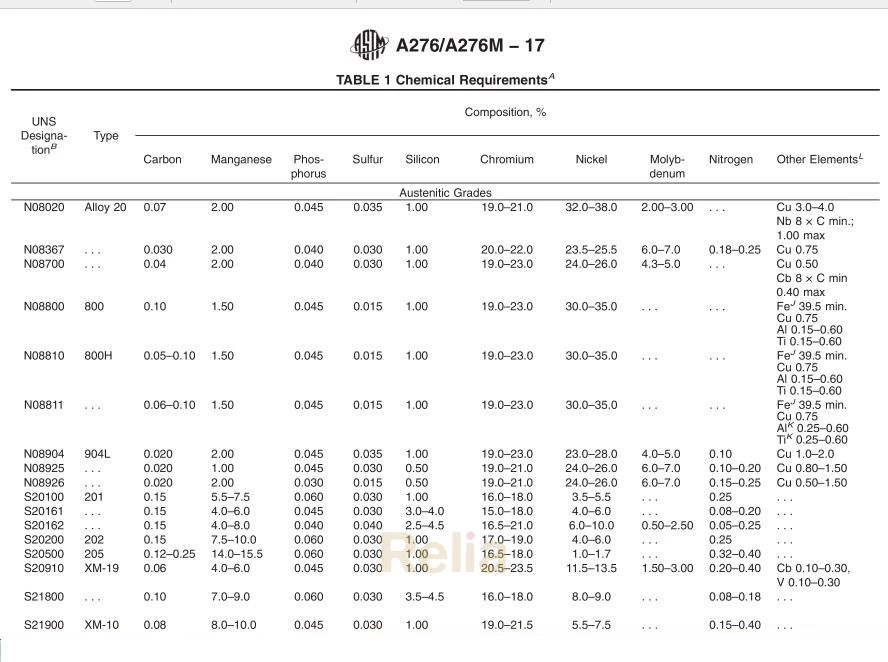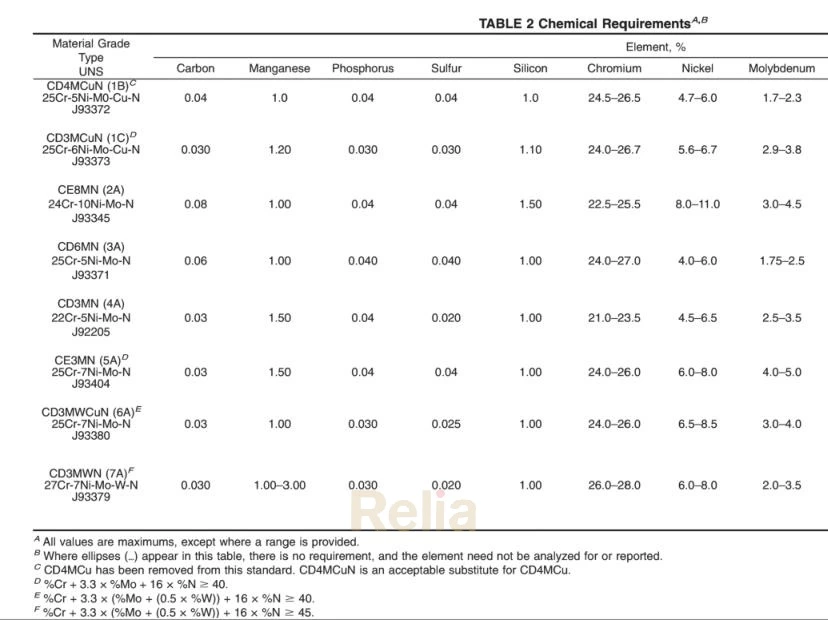ASTM B2 Alloy UNS No. C83600
ASTM B62 specification2 establishes requirements for an alloy; having a composition of copper, tin, lead, and zinc, used for component castings of valves, flanges, and fittings. The common trade name of this alloy is 85-5-5-5; the correct identification is Copper Alloy UNS No. C836003.
Note:
2. For ASME Boiler and Pressure Vessel Code applications see related Specification SB-61 of that Code.
3. The UNS system for copper and copper alloys (see Practice E527) is a simple expansion of the former standard designation system accomplished by the addition of a prefix “C” and a suffix “00”. The suffix can be used to accommodate and composition variations of the base alloy.
Chemical Requirements Copper Alloy UNS No. C83600
| Elements | Composition, % max (Except as Indicated) |
| Copper | 84.0–86.0 |
| Tin | 4.0–6.0 |
| Lead | 4.0–6.0 |
| Zinc | 4.0–6.0 |
| Nickel including Cobalt | 1.0 A |
| Iron | 0.3 |
| Antimony | 0.25 |
| Sulfur | 0.08 |
| Phosphorus B | 0.05 |
| Aluminum | 0.005 |
| Silicon | 0.005 |
Note:
A. In determining copper minimum, copper may be calculated as copper plus nickel.
B. For continuous castings, Phosphorus shall be 1.5 % max.
C.These specification limits do not preclude the presence of other elements. Limits may be established for unnamed elements by agreement between manufacturer or supplier and purchaser. Copper or zinc may be given as remainder and may be taken as the difference between the sum of all elements analyzed and 100 %. When all named elements in Table 1 are analyzed, their sum shall be as follows:
Copper Plus Named Elements, 99.3 % Minimum
Tensile Properties (TABLE 2 )
| Tensile strength, min, ksi(MPa B) | 30 (205) |
| Yield strength, C min, ksi(MPa B) | 14 (95) |
| Elongation in 2 in. or 50 mm, min, % | 20 |
Note:
A. ksi = 1000 psi.
B. See Appendix.
C. Yield strength shall be determined as the stress producing an elongation under load of 0.5 %; that is, 0.01 in. (0.25 mm) in a gage length of 2 in. (51 mm).





